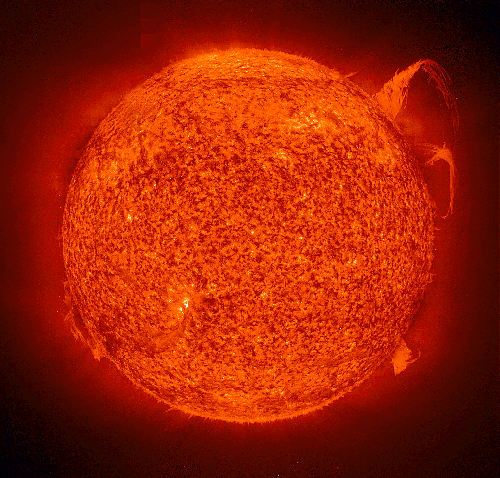A dim yellow star in the constellation Serpens may be nearly identical to the Sun, say astronomers in South Carolina and Hawaii. The star could, therefore, host a life-bearing planet like Earth.
In 1997, astronomers in Brazil identified a solar twin in Scorpius named 18 Scorpii. The star’s properties — mass, age, spectral type, temperature, luminosity, and iron abundance — nearly match the Sun’s. Solar twins are especially interesting to astronomers who search for extraterrestrial intelligence.
King and his colleagues obtained high-resolution spectra of HD 143436 by using the Keck I Telescope in Hawaii. The star is spectral type G0, similar to the Sun’s spectral type of G2. Its absolute magnitude is 4.87 ± 0.10. This is almost the same as the Sun’s, which is 4.83. Thus, both stars emit nearly the same amount of light into space.
King’s team finds HD 143436 to be just as hot as the Sun: Its temperature is 5,768 ± 43 Kelvin, versus the Sun’s 5,777 K. Furthermore, the star’s mass is 1.01 ± 0.02 solar masses, and it has the same amount of iron as the Sun.
No one has yet discovered planets around HD 143436. But if HD 143436 has astronomers, they would see our Sun as an 8th-magnitude star in northern Eridanus.
King’s team does note one difference: The light element lithium is 6 times more abundant on HD 143436 than on the Sun. However, 18 Scorpii’s lithium level is also high — it is 4 times the Sun’s. In addition, HD 143436 may have less oxygen than the Sun.
The astronomers estimate HD 143436’s age to be 3.8 ± 2.9 billion years. Although this range overlaps the Sun’s age of 4.6 billion years, it also means the star could be much younger. A young planet might not have had time to spawn intelligent life.
To reduce the uncertainties, King’s team urges astronomers to study HD 143436 further, saying it “appears to hold great promise as a solar twin candidate.” Until now, however, astronomers have neglected the star. A Google Internet search on “HD 143436” currently turns up nothing, and a search on the star’s alternate name, HIP 78399, produces only one web page.
This is about to change. King and his colleagues will publish their work in the November issue of The Astronomical Journal.










